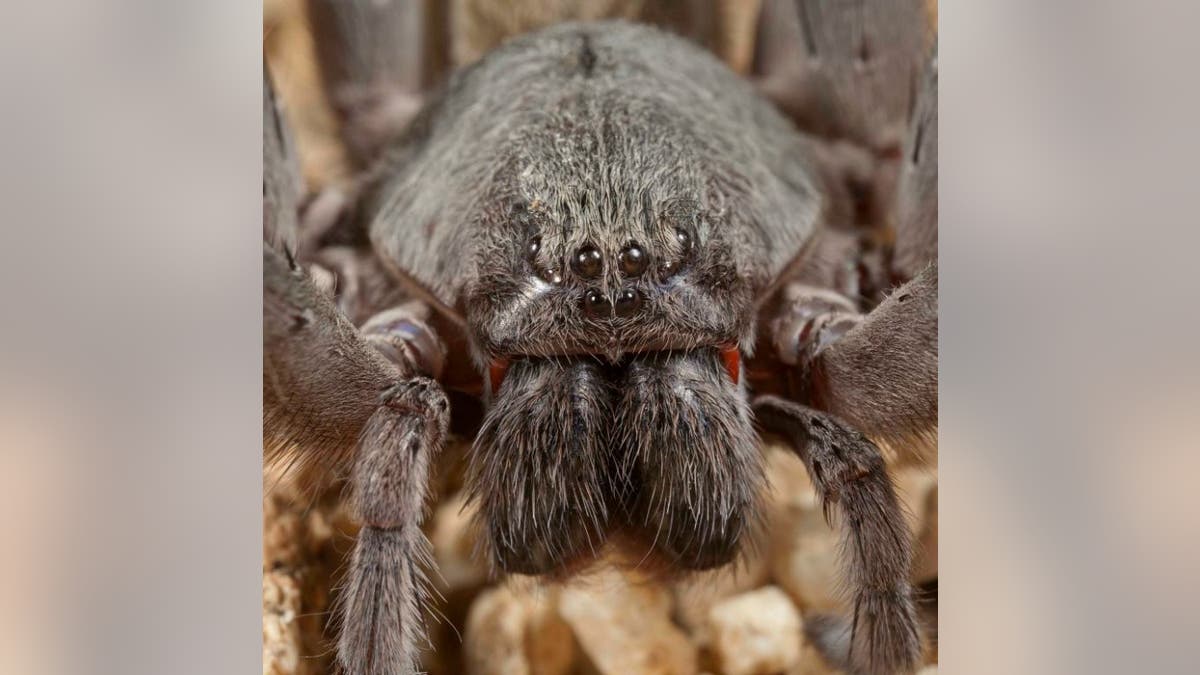
Despite its intimidating look, Califorctenus cacachilensis' venom is not fatal to humans. (Courtesy: San Diego Natural History Museum)
A multinational team of researchers with the San Diego Natural History Museum has added yet another spider to the category of awfully scary arachnids.
The size of a softball, they found the hairy 8-eyed specimen wandering inside a cave in Baja California, Mexico a few years back, while investigating the Sierra Cacachilas mountain range.
BOY, 10, MIRACULOUSLY SURVIVES BITE FROM WORLD'S DEADLIEST SPIDER
After thorough analysis they have now confirmed it is indeed a new species. They have named it Califorctenus cacachilensis.
“The first evidence we found of this species was a shed exoskeleton in the cracks of a rock overhang,” said Jim Berrian, field entomologist at the museum and one of the authors.
“The exoskeleton was abnormally big and I could tell by the eye pattern that it was in a group of spiders, wandering spiders from the Family Ctenidae, with very few species in Baja California Sur.”
The Califorctenus spider’s head and legs are of an intense brown color, while its abdomen is yellow. It is relatively flat and is nearly 4 inches long. It also has two very visible fangs.
SPIDER FROM INDIA LOOKS JUST LIKE 'HARRY POTTER' SORTING HAT
The intimidating creature, however, carries a venom that is not fatal to humans.
“I got bit while handling a live specimen of Califorctenus cacachilensis and I’m still alive,” Berrian said.
Most insects and spiders on the planet have yet to be discovered, according to the San Diego Natural History Museum website. There are about 1.1 million species of insects and spiders on the planet that scientists have given names, but most researchers estimate that there are two to five million that remain undescribed.
SPIDERS CAN HEAR YOU 'WALKING AND TALKING'
“When I saw [the Califorctenus] for the first time, I was very impressed by their size,” said Dr. Maria Luisa Jimenez, a Mexican expert who co-authored the study introducing the new spider.
“In all my experience over the years collecting spiders on the peninsula, I had never seen a spider this large. I suspected that something new was waiting to be described.”
Although this species is considered large, it is far from being among the largest arachnid: the Heteropoda, which lives in tropical Asia, has a leg span of up to a foot.
